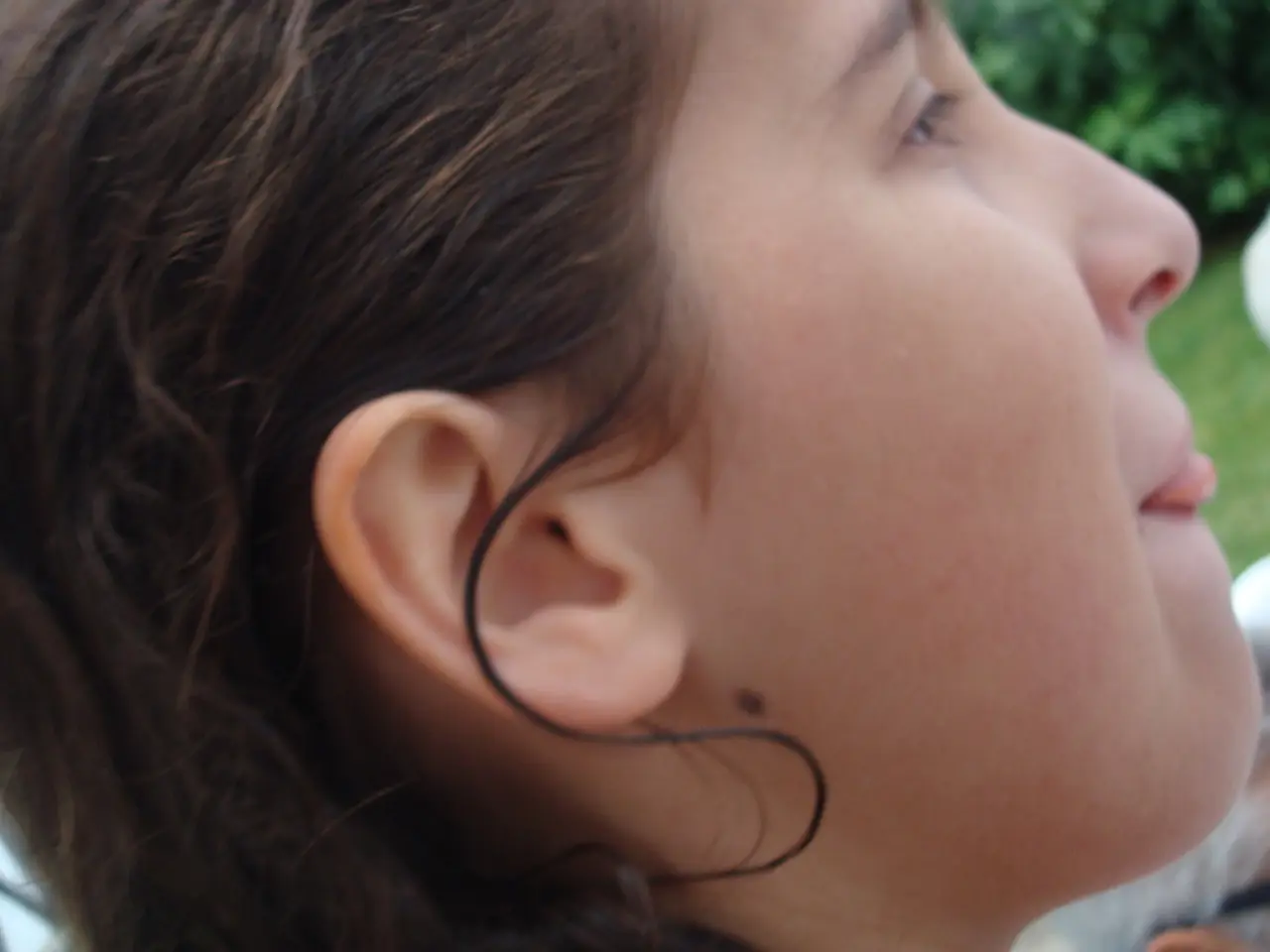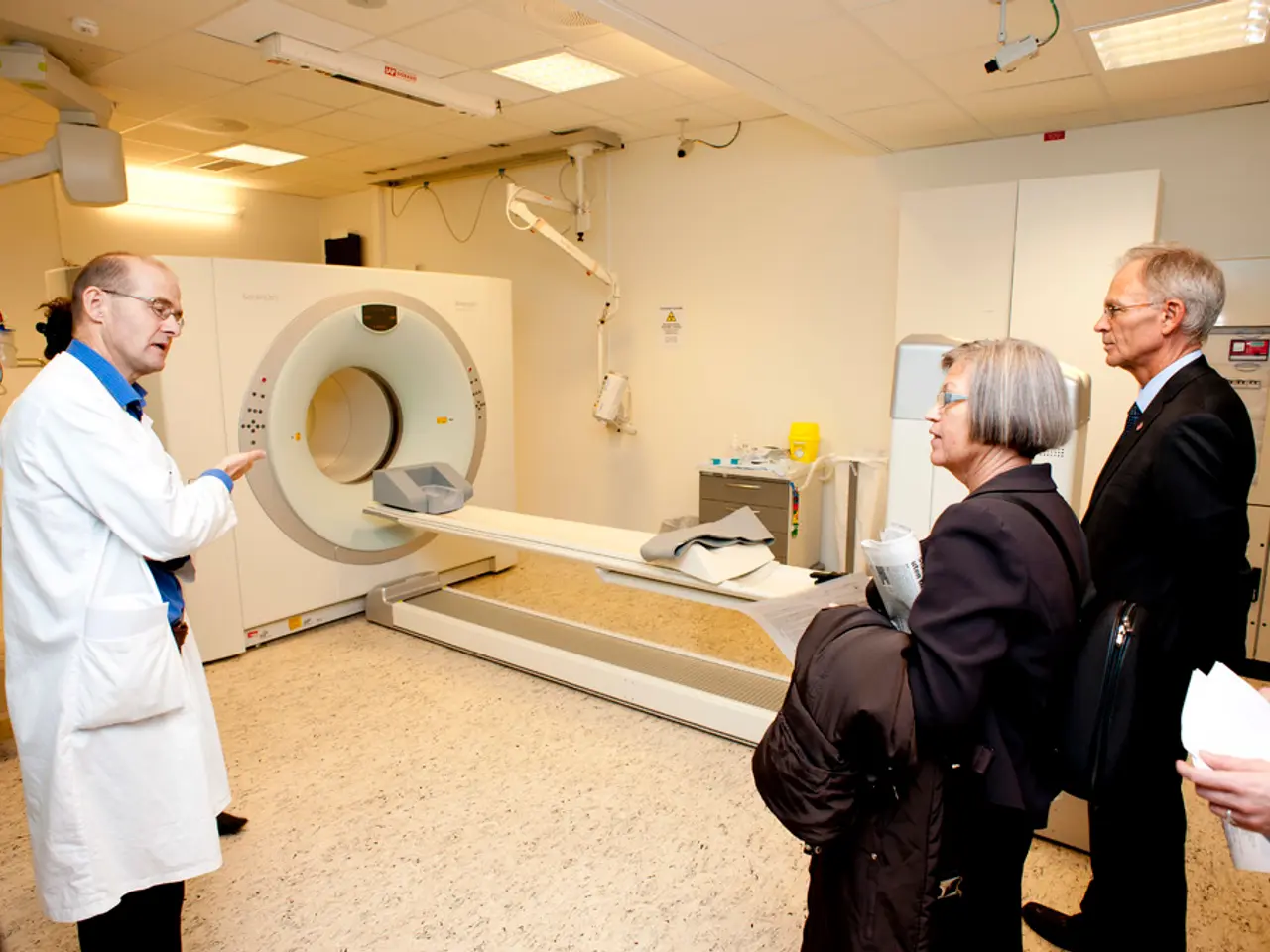Distinguishing Between Freckles, Moles, and Skin Cancer: A Comprehensive Guide on Recognizing the Differences
In the ongoing quest for skin health, it's essential to be aware of potential signs of skin cancer, particularly melanoma. This article aims to provide a comprehensive guide on how to spot and check for melanoma, as well as other general skin cancer symptoms.
Melanoma, a type of skin cancer, often appears as unusual or irregular moles or spots. To help identify these suspicious growths, the "ABCDE" rule is a useful tool:
1. **A**symmetry: One half of a mole or spot doesn’t match the other half. 2. **B**order: Edges are irregular, scalloped, or poorly defined. 3. **C**olor: Multiple colors such as varying shades of tan, brown, black, white, red, or pink are present. 4. **D**iameter: The spot is larger than about 6 millimeters (size of a pencil eraser), though melanomas can be smaller. 5. **E**volving: Any change in size, shape, color, or new symptoms such as bleeding, itching, or crusting over time should raise concern.
Remember, melanomas can appear anywhere on the body, so it's crucial to examine all areas, including sun-exposed areas and those that are less exposed.
In addition to the ABCDE rule, other general skin cancer signs include:
- A new spot on the skin or a mole that looks different from others. - A spot that changes in size, shape, or color. - Itching, tenderness, pain, or bleeding in a mole or spot. - A sore that does not heal or that crusts over. - Shiny bumps (basal cell carcinoma) or red, scaly patches (squamous cell carcinoma). - Rough, scaly, or wart-like growths, or scar-like patches with unclear borders.
To perform a self-examination, stand in front of a full-length mirror and examine your whole body, including front and back, sides with arms raised, underarms, scalp, ears, neck, and between fingers and toes. Pay special attention to any new or changing lesions.
If you notice any suspicious spots or changes per the ABCDE guide, if a spot bleeds, itches, or does not heal after two weeks, or if you have a mole that looks different from others or changes over time, it's essential to seek medical advice. A healthcare provider, often a dermatologist, will perform a skin examination. If melanoma is suspected, a skin biopsy may be done to confirm the diagnosis.
Early detection is critical because melanoma can be aggressive but is highly treatable when caught early. Regular self-exams and prompt medical evaluation of suspicious skin changes are key to the best outcomes. Setting a reminder every few months for self-exams is crucial for prevention.
In addition to regular checks, wearing broad-spectrum sunscreen with SPF 30 or higher every day is a practical way to lower the risk of skin cancer. Avoiding tanning beds and seeking shade during peak sun hours can also help reduce the risk.
Freckles, while harmless, are a marker for sun sensitivity. Most people get moles during childhood or adolescence. While they are generally harmless, it's essential to monitor them for any changes.
Regular self-exams, a dermatologist's professional examination, and prompt medical evaluation of suspicious skin changes are your best defences against skin cancer. Stay vigilant and stay healthy!
- In the realm of health-and-wellness and skin care, understanding the signs of skin cancer, such as melanoma, is crucial for maintaining one's overall health, given that it can be a potential threat to one's skin.
- The 'ABCDE' rule is a valuable resource when it comes to identifying suspicious growths that may indicate melanoma or other skin cancers, making it an essential tool for medical-conditions awareness.
- Besides melanoma instances that follow the ABCDE rule, other general indicators of skin cancer can include moles that differ from others, new spots on the skin, changing mole sizes or shapes, and other symptoms like bleeding, itching, or non-healing sores.




